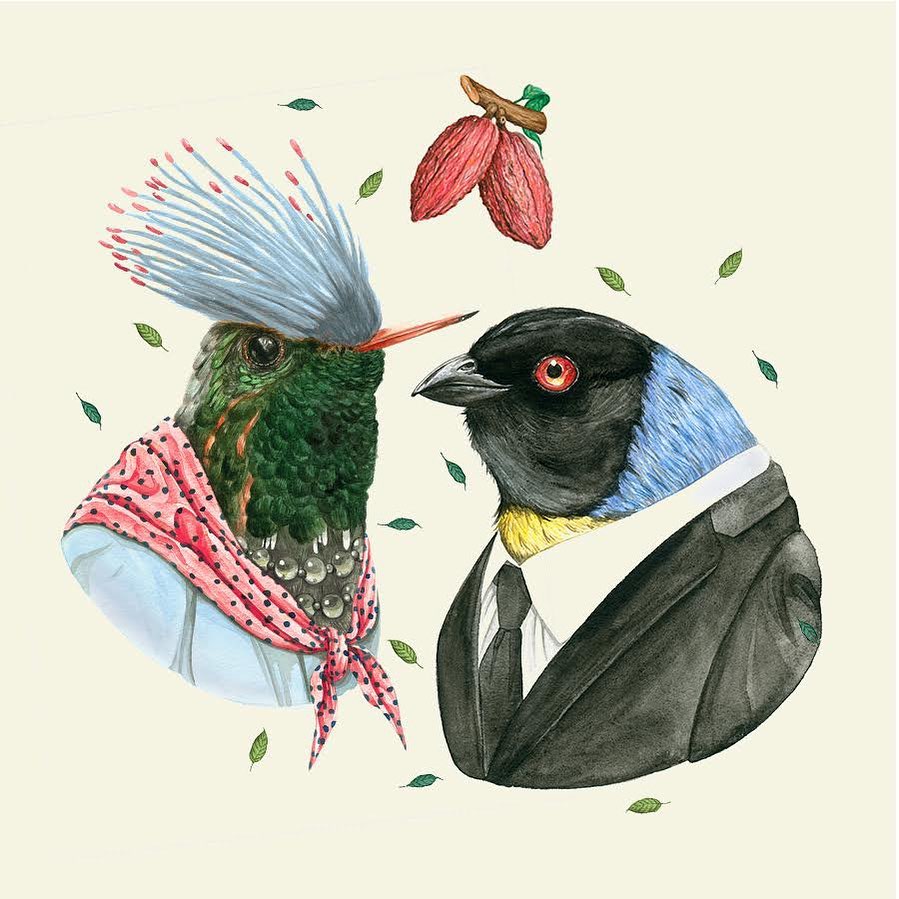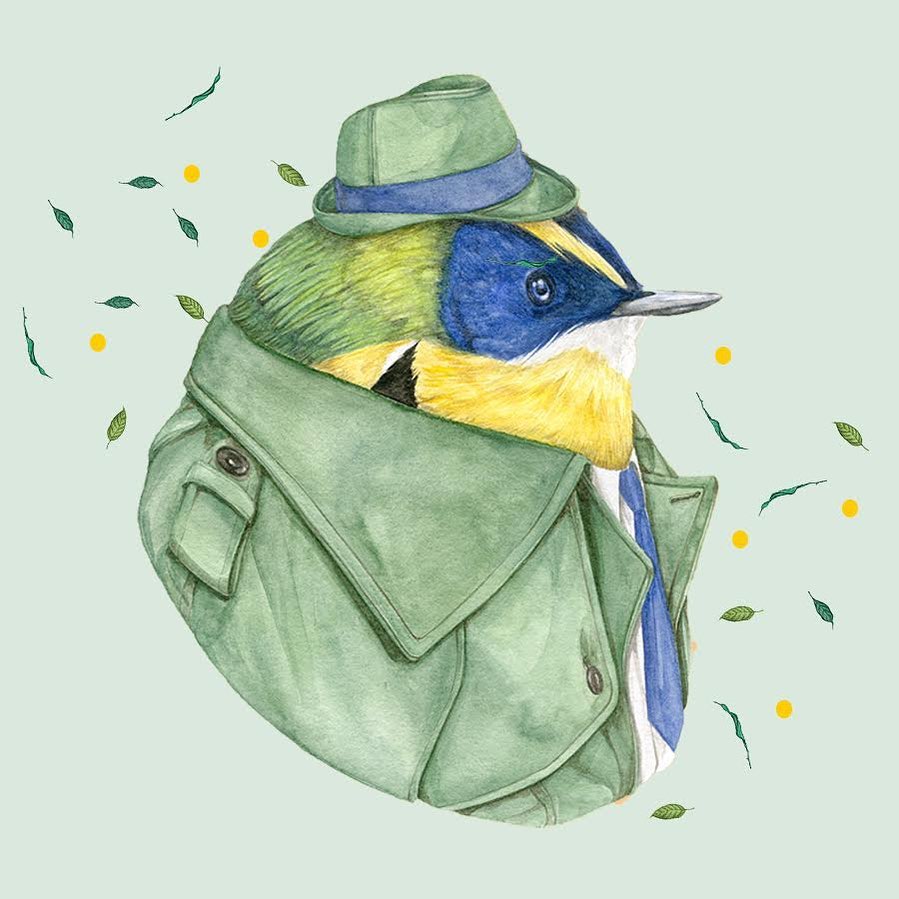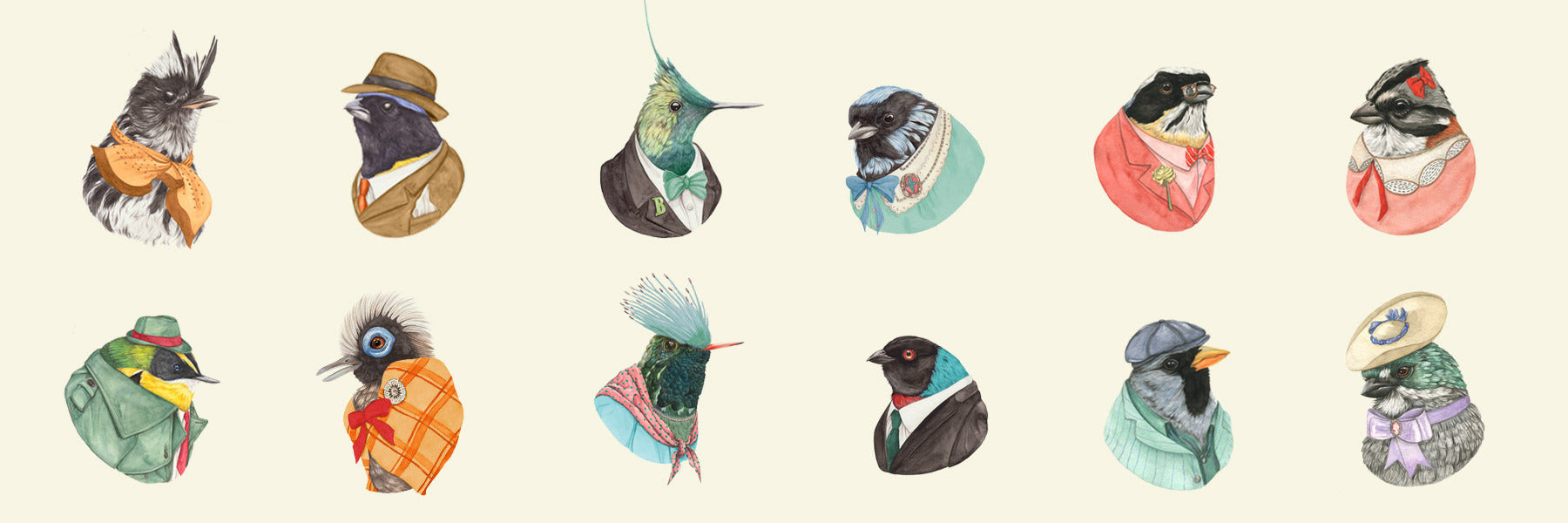Our birds reflect the origin of the cocoa. We have taken actual birds found in the countries of origin and applied a little artistic licence.
South American and Madagascan birds grace our chocolate bars. Looking closely down the side of our wrappers, you will see the birds we used as inspiration.
All our illustrations are originals painted by Henrietta Harris. We’ve dressed them up in their best Sunday garb for fun but ultimately to remind us, in a good way, that protecting this delicate ecosystem impacts not just the environment and the people but the animals as well.


Since graduating in 2006 with a Bachelor of Fine Arts from Auckland University of Technology, Henrietta Harris has steadily built up a name for herself as a skilfull New Zealand artist.
Her paintings often involve portraiture with a departure into the surreal. She primarily works with watercolour paint on paper.
Dark drinking chocolate birds
We are proudly working with the Endangered Species Foundation, a charitable organisation that supports high-priority conservation projects to protect New Zealand's most vulnerable indigenous species from extinction.
10% of the profits from our Drinking chocolate is donated to supporting the Tara Iti or Tūturiwhatu.
Tara Iti is Aotearoa's most endangered bird with only 37 left in the world. Having teetered on the brink of extinction since the 1970s, there are currently 10 breeding pairs in total found North of Auckland at Waipu, Mangawhai, Te Arai and Pakiri.
Beach narrowing has forced these tiny birds to nest closer to the sea, putting their eggs at risk during storms. Introduced predators and human and dog disturbances have also contributed to their low breeding rates.
Once abundant in Aotearoa, Tūturiwhatu have now become one of New Zealand's rarest birds. With a population of 2500, they are more endangered than some species of kiwi.
This beautiful bird with its rust-coloured breast mostly forages and nests in coastal regions in the top of the North Island from Northland to Gisborne. Unfortunately, becuase they nest on some of the most popular summer beaches, coastal developments, introduced predators and human disturbances during breeding seasons have contributed to their decline.



